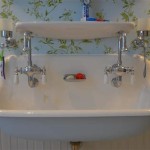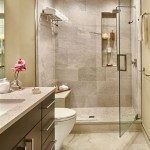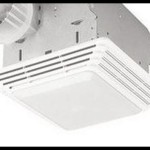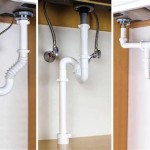How to Get Rid of Black Dots on Bathroom Ceiling
The appearance of black dots on a bathroom ceiling is a common household problem, often indicating the presence of mold or mildew. These microorganisms thrive in damp and poorly ventilated environments, making bathrooms particularly susceptible. Addressing this issue promptly is crucial, not only for aesthetic reasons but also to prevent potential health problems and structural damage to the property.
Mold and mildew are fungi that reproduce by releasing spores into the air. These spores are ubiquitous and can be found both indoors and outdoors. When spores land on a surface that provides moisture and nutrients, they can begin to grow and form colonies. Bathrooms, with their frequent humidity and temperature fluctuations, offer an ideal breeding ground for these organisms. Steam from showers and baths, coupled with inadequate ventilation, creates a persistently moist environment that encourages mold and mildew growth, often manifesting as those unsightly black dots.
Identifying the type of growth is the first step towards effective remediation. While both mold and mildew contribute to discoloration, they differ in several key aspects. Mildew typically appears as a flat, superficial growth that is white, gray, or yellow in color. It often has a powdery or fluffy texture and can be relatively easy to remove. Mold, on the other hand, tends to penetrate deeper into surfaces and can be black, green, brown, or other colors. It often has a slimy or fuzzy appearance and can be more difficult to eradicate. The black dots observed on a bathroom ceiling are frequently indicative of mold, specifically black mold, which can be particularly problematic.
Ignoring the presence of mold and mildew can have several detrimental consequences. Prolonged exposure to mold spores can trigger allergic reactions, respiratory problems, and other health issues, particularly in individuals with asthma, allergies, or weakened immune systems. Furthermore, unchecked mold growth can damage building materials, such as drywall, paint, and wood, leading to costly repairs. Therefore, timely removal and prevention are essential for maintaining a healthy and structurally sound home.
Effective mold and mildew remediation involves a multi-faceted approach that includes identifying the source of moisture, cleaning and disinfecting the affected area, and implementing preventative measures to inhibit future growth. The following sections outline these steps in detail, providing guidance on how to effectively remove black dots from a bathroom ceiling and prevent their recurrence.
Identifying and Addressing the Source of Moisture
The most critical step in eliminating mold and mildew is to identify and rectify the source of moisture that is fueling their growth. Without addressing the underlying cause, any cleaning efforts will only provide temporary relief, and the problem will inevitably return. Common sources of moisture in bathrooms include:
- Inadequate Ventilation: Insufficient airflow allows humidity to build up, creating a favorable environment for mold and mildew.
- Leaky Plumbing: Dripping faucets, leaky showerheads, or hidden pipe leaks can introduce excessive moisture into the bathroom.
- Condensation: Condensation on walls and ceilings, especially during colder months, provides a constant source of moisture.
- Poor Insulation: Inadequate insulation can lead to temperature fluctuations and condensation.
- Water Damage: Past water damage incidents, such as flooding or leaks, can leave behind residual moisture that promotes mold growth.
To identify the source of moisture, a thorough inspection of the bathroom is necessary. Pay close attention to areas around showers, bathtubs, toilets, and sinks. Check for visible leaks, water stains, or dampness. Examine the caulking and grout around tiles for cracks or deterioration, as these can allow water to penetrate behind the surfaces. Inspect the ventilation system to ensure it is functioning properly and providing adequate airflow. If a leak is suspected behind walls or ceilings, it may be necessary to consult with a professional plumber or contractor.
Once the source of moisture has been identified, it must be addressed promptly. Repair any leaks, improve ventilation, and address any condensation issues. Consider installing a more powerful exhaust fan or opening windows after showering to allow moisture to escape. Ensure that the bathroom is properly insulated to prevent temperature fluctuations and condensation. In cases of significant water damage, professional remediation services may be required to thoroughly dry and disinfect the affected areas.
Cleaning and Disinfecting the Affected Area
After addressing the source of moisture, the next step is to clean and disinfect the affected area to remove the existing mold and mildew. Several cleaning solutions can be used for this purpose, ranging from readily available household products to specialized mold and mildew removers. When working with cleaning solutions, it is essential to wear appropriate personal protective equipment (PPE), including gloves, eye protection, and a respirator mask, to avoid skin and respiratory irritation. Proper ventilation is also crucial to minimize exposure to fumes.
Cleaning Solutions:
- Bleach Solution: A solution of one part bleach to ten parts water is a common and effective disinfectant for removing mold and mildew. However, bleach can damage certain surfaces and should be used with caution. It is crucial *not* to mix bleach with ammonia or other cleaning products, as this can create toxic fumes.
- Vinegar: White vinegar is a natural and less toxic alternative to bleach. Its acidic properties can effectively kill mold and mildew.
- Baking Soda: Baking soda is a mild abrasive that can help remove surface mold and mildew. It also acts as a deodorizer.
- Commercial Mold and Mildew Removers: Several commercial products are specifically formulated to remove mold and mildew. These products often contain stronger chemicals and should be used according to the manufacturer's instructions.
Cleaning Process:
- Prepare the Area: Cover any surrounding surfaces with plastic sheeting to prevent the spread of spores. Ensure adequate ventilation by opening windows or turning on the exhaust fan.
- Apply the Cleaning Solution: Spray or apply the chosen cleaning solution to the affected area. Allow the solution to sit for several minutes to penetrate the mold and mildew.
- Scrub the Surface: Use a scrub brush or sponge to vigorously scrub the surface, removing the mold and mildew. For porous surfaces like drywall, a more abrasive scrubbing may be necessary. It may be best to replace drywall heavily infested with mold.
- Rinse Thoroughly: Rinse the cleaned area with clean water to remove any remaining cleaning solution and dislodged mold and mildew.
- Dry the Area: Thoroughly dry the cleaned area with a clean towel or cloth. A fan can be used to accelerate the drying process.
- Disposal: Dispose of any cleaning supplies, such as sponges and cloths, that were used to clean the mold and mildew in a sealed plastic bag to prevent the spread of spores.
For stubborn mold stains, repeat the cleaning process as necessary. If the mold growth is extensive or if you are uncomfortable handling it yourself, consider hiring a professional mold remediation service.
Implementing Preventative Measures
Preventing the recurrence of mold and mildew requires implementing proactive measures to control moisture levels and inhibit fungal growth. These measures should be ongoing and integrated into the regular bathroom maintenance routine.
Ventilation: Ensure adequate ventilation by using the exhaust fan during and after showers and baths. Leave the fan running for at least 20 minutes to allow moisture to dissipate. Open windows whenever possible to promote airflow.
Moisture Control: Wipe down shower walls and doors after each use to remove excess moisture. Repair any leaks promptly and address any condensation issues. Use a dehumidifier in the bathroom to reduce humidity levels, especially in humid climates. Consider using moisture-absorbing products, such as DampRid, to help control humidity.
Cleaning and Maintenance: Regularly clean the bathroom to remove dirt and grime that can serve as a food source for mold and mildew. Pay particular attention to areas prone to moisture accumulation, such as shower walls, floors, and grout lines. Use mold and mildew-resistant cleaning products. Regularly inspect and clean shower curtains and bath mats.
Caulking and Grout: Inspect and maintain caulking and grout around tiles to prevent water from penetrating behind the surfaces. Repair any cracks or deterioration promptly to prevent moisture buildup.
Mold-Resistant Paint: Consider using mold-resistant paint on bathroom walls and ceilings. These paints contain additives that inhibit mold growth.
Proper Storage: Store toiletries and other items in a way that allows for adequate airflow. Avoid overcrowding shelves and cabinets, as this can trap moisture.
By implementing these preventative measures, it is possible to significantly reduce the risk of mold and mildew growth in the bathroom and maintain a clean, healthy, and aesthetically pleasing environment.
In summary, addressing black dots on a bathroom ceiling requires a comprehensive approach that involves identifying and addressing the source of moisture, cleaning and disinfecting the affected area, and implementing preventative measures to inhibit future growth. By following these steps diligently, homeowners can effectively eliminate existing mold and mildew and prevent its recurrence, safeguarding their health and protecting their property from damage. Regular bathroom maintenance and proactive moisture control are essential for maintaining a mold-free environment.

Black Spots On The Bathroom Ceiling Flood Water Damage Honolulu Oahu Hawaii Md Restoration

How To Clean Black Spots In The Bathroom Family Handyman

How To Get Rid Of Mold On Your Bathroom Ceiling Aqa

Ceiling Mold Growth Learn The Cause And How To Prevent It Environix

How To Remove Black Mold From A Bathroom Ceiling

Black Mould Removal The Right Way

Ceiling Mold Growth Learn The Cause And How To Prevent It Environix

Mold On Bathroom Ceiling How To Clean Off

Bathroom Ceiling Mold Removal When To Clean Call Branch Environmental

What Is The Best Way To Remove Mold From Bathroom Ceiling







